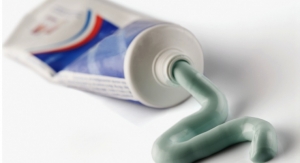Nava Dayan, Dr. Nava Dayan LLC07.01.16
Testing for endocrine disruption aims to identify the potential of a compound to disrupt the endocrine system. Endocrine disruptors are compounds that interfere with components of the endocrine system, which includes the glands in the body that produce and secrete hormones into the systemic circulation that may affect a variety of target organs. Unlike the nervous system that acts relatively quickly, the endocrine system’s effect is slow to initiate and is maintained for a prolonged period of time.
Such an effect, therefore, is difficult to correlate to a potential cause since it drives the body slowly to a new state of homeostasis and may lead to chronic disorders. Endocrine disruption affects growth, organ development, body shape, organ functions, mood and behavior.
Such compounds can disturb body biology in utero at stages of fetal development as well as after birth at any age. Endocrine disruptors can also affect the nervous system via receptors expressed on neuroendocrine cells. These cells are present in the endocrine glands and throughout the body. In the skin, these cells are known as Merkel cells, which are associated with skin sensation and can differentiate between shapes and textures upon touch. Merkel cells can turn malignant to form Merkel cell carcinoma. The effect of endocrine disruptors on the nervous system can be mediated through receptors expressed on the neuroendocrine cells, as well as by regulating metabolism of steroid hormones in the brain.
It is critical to understand that exposure to compounds that affect endocrine activity can result in persistence of more than one generation. This means that it can be mediated epigenetically, leading to heritable changes in gene function and be maintained in germ cells to be transmitted via those cells.
Endocrine disruptors can:
Such compounds may affect:
Relevant studies may involve the following:
An example for a compound that is used in topical consumer products and has been identified as a potential endocrine disruptor is the antimicrobial agent triclosan. The FDA notes on its site that “Animal studies have shown that triclosan alters hormone regulation. However, data showing effects in animals don’t always predict effects in humans” therefore “FDA is engaged in an ongoing scientific and regulatory review of this ingredient.”
A study published by the EPA in 2010 describes triclosan as a compound that alters serum thyroid hormone and testosterone concentration in male rats. When evaluated in female Wistar rats, triclosan was shown to advance the age of onset of vaginal opening and increased uterine weight. Such an effect proposes potential estrogenic activity. In addition, serum thyroid hormone concentrations were suppressed by triclosan in this study, and similar to other studies in the male and female rat.
Researchers concluded that triclosan affected estrogen-mediated responses in the pubertal and weanling female rat and also suppressed thyroid hormone in both studies. However, as noted by FDA, animals may not represent effect in humans since the lowest effective concentrations in the rodent model are approximately 10 (for estrogen) and 40 (for thyroid hormone) times higher than the highest concentrations reported in human plasma.
Additional compounds that are suspected as endocrine disruptors are DDT (dichlorodiphenyltrichloroethane), Bisphenol-A and phthalates.
A reasonable approach to initiate an assessment for the need and the required tier for endocrine is described in the scheme above.
The following are potential studies to include in the in vitro test battery. Additional studies are available and the tier should be customized based on other information and risk assessment.
Screening Assay
Predicting the precise clinical outcome of interference with estrogen activity is very complicated since the interaction of estrogen hormones with their receptors may lead to a cascade of pharmacological events that is dependent on the particular condition of the individual exposed. Such may include cell proliferation, fetal development and general body homeostasis. It is therefore easier to focus on the mere receptor interaction assuming that if such occurs by foreign substances; the system may be manipulated to generate a variety of adverse reactions and adverse conditions.
The BG1Luc Estrogen Receptor (ER) Transactivation (BG1Luc ER TA) test method is aimed at the identification of potential estrogen receptor agonists and antagonists; i.e., compounds that interact with estrogen receptor and either activate it or deactivate it respectively. This method was validated by the National Toxicology Program Interagency Center for Evaluation of Alternative Toxicological Methods (NICEATM) and the Interagency Coordinating Committee on Validation of Alternative Methods (ICCVAM). The method utilizes a human ovarian adenocarcinoma cell line, BG-1, that is transfected by ER responsive luciferase reporter gene. It can provide a dose-response receptor interaction. It is important to note that in humans there are two major subtypes of ERs, α and β, which are encoded by different genes, translate to different proteins and function in dissimilar manners. Although BG1Luc cell lines predominantly express ERα; they also express smaller amounts of ERβ. The method is designed to specifically detect human ERα and ERβ by measuring chemiluminescence as its endpoint.
Chemiluminescence is commonly used in bioassays and allows for high signal to background ratio detection. While this method addresses involvement in key mechanisms of estrogen, it is not designed to gain information on other endocrine related receptors or enzymes; metabolic activation, distribution of hormones in tissues and their clearance from the tissue. This is important because, as mentioned, hormone related effect may require long persistent duration of exposure to manifest a clinical effect.
Receptor Binding Assay
Similar to the estrogen receptor binding assay, the Androgen Receptor (AR) binding assay is aimed at detection of receptor interaction that is the starting activity in a complicated cascade which may lead to variety of clinical manifestations. It identifies compounds that interact with the receptor and may be activating it (agonists) or blocking it (antagonists) but cannot distinguish between them. Like estrogens for women; androgens for males are sex hormones that play key role in sexual differentiation, development and maturation and have roles in female physiology as well.
Androgens affect maintenance of male sexual characteristics, sperm cells production and prostate gland growth and function. This assay utilizes AR binding measuring the affinity of a compound to AR by evaluating its ability to displace bound reference of androgen; usually 5α-dihydrotestosterone (DHT) or a synthetic androgen (R1881). The ligand is radiolabeled, enabling detection of very small amounts in variability and high sensitivity.
Aromatase Inhibition Assay
The enzyme aromatase (also called estrogen synthase) is a key enzyme in esterogenesis. Specifically, it is catalyzing the aromatization of androgens into estrogens. Therefore, inhibition of this enzyme can result in significant imbalance in levels of sex hormones leading to androgen elevation and estrogen reduction. As an enzyme that belongs to the P450 metabolic cycle, aromatase is expressed in a variety of tissues including brain, gonads, placenta, bone and skin, as well as in some cancer tissues.
The aromatase assay is designed at identification of compounds that may inhibit its catalytic activity.
The controversy with the implications of this assay stems from the fact that small levels of enzyme inhibition may exhibit health benefits especially in specific populations such as postmenopausal women who are diagnosed with early stages of estrogen responsive cancer. Adding to the confusion is the fact that some natural plant derived compounds known for their health benefits were shown to inhibit the enzyme. Examples for such compounds are resveratrol and melatonin. In a publication form 2014, anti-aromatase effect of these two compounds was demonstrated in breast cancer cells co-cultured with breast adipose fibroblasts. In the presence of testosterone in this model, both melatonin and resveratrol were found to be aromatase inhibitors. As such, it may be an advantage to include such natural compounds as controls in this study so the magnitude of the studied effect is viewed in proportion to potential harm. In principle, this assay is conducted by incubation of human recombinant microsomes (microsomal cytochrome P450) with increasing concentrations of the tested compound, a radiolabeled aromatase substrate as well as an essential cofactor (NADPH). The rate of tritiated water released during the conversion of the substrate to estrone is quantified by liquid scintillation that is corresponding to the magnitude of enzyme activity. The protocol allows the classification of the chemical as an inhibitor or non-inhibitor.
In summary, the identification of endocrine disruptors in daily use consumer products is critical in current life style but also across generations. If a compound is suspected as an endocrine disruptors, based on a battery of conducted assay with today’s available tools, knowledge on the prediction of its long term use and cross generation effects are very difficult to predict. The risk assessor should, therefore, utilize an orchestrated tool approach and reasoning for harm prediction and its relativity.
References:
Nava Dayan
Owner
Dr. Nava Dayan LLC
Nava Dayan Ph.D. is the owner of Dr. Nava Dayan L.L.C, a skin science and research consultancy and serving the pharmaceutical, cosmetic, and personal care industries. She has 25 years of experience in the skin care segment, and more than 150 publication credits. Tel: 201-206-7341; E-mail: nava.dayan@verizon.net
Such an effect, therefore, is difficult to correlate to a potential cause since it drives the body slowly to a new state of homeostasis and may lead to chronic disorders. Endocrine disruption affects growth, organ development, body shape, organ functions, mood and behavior.
Such compounds can disturb body biology in utero at stages of fetal development as well as after birth at any age. Endocrine disruptors can also affect the nervous system via receptors expressed on neuroendocrine cells. These cells are present in the endocrine glands and throughout the body. In the skin, these cells are known as Merkel cells, which are associated with skin sensation and can differentiate between shapes and textures upon touch. Merkel cells can turn malignant to form Merkel cell carcinoma. The effect of endocrine disruptors on the nervous system can be mediated through receptors expressed on the neuroendocrine cells, as well as by regulating metabolism of steroid hormones in the brain.
It is critical to understand that exposure to compounds that affect endocrine activity can result in persistence of more than one generation. This means that it can be mediated epigenetically, leading to heritable changes in gene function and be maintained in germ cells to be transmitted via those cells.
Endocrine disruptors can:
- Prevent the activity of an endogenous hormone; for example by blocking the site of activity (receptor);
- Affect the pharmacokinetic profile of the hormone; for example, interfering its synthesis, metabolism and excretion; and
- Mimic the activity of the endogenous hormone thereby causing further activation.
Such compounds may affect:
- Sex hormones; estrogen and androgen;
- The hypothalamic-pituitary adrenal axis;
- Thyroid hormone; and
- Feedback-regulating hormone (cor -ticotrophin).
Relevant studies may involve the following:
- Receptor binding and enzyme assays;
- General mode of action of the tested compound;
- Repeat dose toxicity studies;
- Developmental and reproduction tox -icity; and
- Carcinogenicity.
An example for a compound that is used in topical consumer products and has been identified as a potential endocrine disruptor is the antimicrobial agent triclosan. The FDA notes on its site that “Animal studies have shown that triclosan alters hormone regulation. However, data showing effects in animals don’t always predict effects in humans” therefore “FDA is engaged in an ongoing scientific and regulatory review of this ingredient.”
A study published by the EPA in 2010 describes triclosan as a compound that alters serum thyroid hormone and testosterone concentration in male rats. When evaluated in female Wistar rats, triclosan was shown to advance the age of onset of vaginal opening and increased uterine weight. Such an effect proposes potential estrogenic activity. In addition, serum thyroid hormone concentrations were suppressed by triclosan in this study, and similar to other studies in the male and female rat.
Researchers concluded that triclosan affected estrogen-mediated responses in the pubertal and weanling female rat and also suppressed thyroid hormone in both studies. However, as noted by FDA, animals may not represent effect in humans since the lowest effective concentrations in the rodent model are approximately 10 (for estrogen) and 40 (for thyroid hormone) times higher than the highest concentrations reported in human plasma.
Additional compounds that are suspected as endocrine disruptors are DDT (dichlorodiphenyltrichloroethane), Bisphenol-A and phthalates.
A reasonable approach to initiate an assessment for the need and the required tier for endocrine is described in the scheme above.
The following are potential studies to include in the in vitro test battery. Additional studies are available and the tier should be customized based on other information and risk assessment.
Screening Assay
Predicting the precise clinical outcome of interference with estrogen activity is very complicated since the interaction of estrogen hormones with their receptors may lead to a cascade of pharmacological events that is dependent on the particular condition of the individual exposed. Such may include cell proliferation, fetal development and general body homeostasis. It is therefore easier to focus on the mere receptor interaction assuming that if such occurs by foreign substances; the system may be manipulated to generate a variety of adverse reactions and adverse conditions.
The BG1Luc Estrogen Receptor (ER) Transactivation (BG1Luc ER TA) test method is aimed at the identification of potential estrogen receptor agonists and antagonists; i.e., compounds that interact with estrogen receptor and either activate it or deactivate it respectively. This method was validated by the National Toxicology Program Interagency Center for Evaluation of Alternative Toxicological Methods (NICEATM) and the Interagency Coordinating Committee on Validation of Alternative Methods (ICCVAM). The method utilizes a human ovarian adenocarcinoma cell line, BG-1, that is transfected by ER responsive luciferase reporter gene. It can provide a dose-response receptor interaction. It is important to note that in humans there are two major subtypes of ERs, α and β, which are encoded by different genes, translate to different proteins and function in dissimilar manners. Although BG1Luc cell lines predominantly express ERα; they also express smaller amounts of ERβ. The method is designed to specifically detect human ERα and ERβ by measuring chemiluminescence as its endpoint.
Chemiluminescence is commonly used in bioassays and allows for high signal to background ratio detection. While this method addresses involvement in key mechanisms of estrogen, it is not designed to gain information on other endocrine related receptors or enzymes; metabolic activation, distribution of hormones in tissues and their clearance from the tissue. This is important because, as mentioned, hormone related effect may require long persistent duration of exposure to manifest a clinical effect.
Receptor Binding Assay
Similar to the estrogen receptor binding assay, the Androgen Receptor (AR) binding assay is aimed at detection of receptor interaction that is the starting activity in a complicated cascade which may lead to variety of clinical manifestations. It identifies compounds that interact with the receptor and may be activating it (agonists) or blocking it (antagonists) but cannot distinguish between them. Like estrogens for women; androgens for males are sex hormones that play key role in sexual differentiation, development and maturation and have roles in female physiology as well.
Androgens affect maintenance of male sexual characteristics, sperm cells production and prostate gland growth and function. This assay utilizes AR binding measuring the affinity of a compound to AR by evaluating its ability to displace bound reference of androgen; usually 5α-dihydrotestosterone (DHT) or a synthetic androgen (R1881). The ligand is radiolabeled, enabling detection of very small amounts in variability and high sensitivity.
Aromatase Inhibition Assay
The enzyme aromatase (also called estrogen synthase) is a key enzyme in esterogenesis. Specifically, it is catalyzing the aromatization of androgens into estrogens. Therefore, inhibition of this enzyme can result in significant imbalance in levels of sex hormones leading to androgen elevation and estrogen reduction. As an enzyme that belongs to the P450 metabolic cycle, aromatase is expressed in a variety of tissues including brain, gonads, placenta, bone and skin, as well as in some cancer tissues.
The aromatase assay is designed at identification of compounds that may inhibit its catalytic activity.
The controversy with the implications of this assay stems from the fact that small levels of enzyme inhibition may exhibit health benefits especially in specific populations such as postmenopausal women who are diagnosed with early stages of estrogen responsive cancer. Adding to the confusion is the fact that some natural plant derived compounds known for their health benefits were shown to inhibit the enzyme. Examples for such compounds are resveratrol and melatonin. In a publication form 2014, anti-aromatase effect of these two compounds was demonstrated in breast cancer cells co-cultured with breast adipose fibroblasts. In the presence of testosterone in this model, both melatonin and resveratrol were found to be aromatase inhibitors. As such, it may be an advantage to include such natural compounds as controls in this study so the magnitude of the studied effect is viewed in proportion to potential harm. In principle, this assay is conducted by incubation of human recombinant microsomes (microsomal cytochrome P450) with increasing concentrations of the tested compound, a radiolabeled aromatase substrate as well as an essential cofactor (NADPH). The rate of tritiated water released during the conversion of the substrate to estrone is quantified by liquid scintillation that is corresponding to the magnitude of enzyme activity. The protocol allows the classification of the chemical as an inhibitor or non-inhibitor.
In summary, the identification of endocrine disruptors in daily use consumer products is critical in current life style but also across generations. If a compound is suspected as an endocrine disruptors, based on a battery of conducted assay with today’s available tools, knowledge on the prediction of its long term use and cross generation effects are very difficult to predict. The risk assessor should, therefore, utilize an orchestrated tool approach and reasoning for harm prediction and its relativity.
References:
- Stoker T.E. et al. Triclosan exposure modulates estrogen-dependent responses in the female wistar rat. Toxicol Sci. 2010 Sep;117(1):45-53. doi: 10.1093/toxsci/kfq180. Epub 2010 Jun 18.
- OECD TG 457: https://ntp.niehs.nih.gov/iccvam/suppdocs/feddocs/oecd/oecd-tg457-508.pdf
- Aromatase assay http://www.epa.gov/endo/pubs/toresources/seps/Final_890.1200_Aromatase_Assay_SEP_%208.1.11.pdf
- Androgen binding assay http://www.epa.gov/endo/pubs/toresources/seps/Final_890.1150_AR_Bindng_Assay_SEP_10.5.11.pdf
- Chottanapund S et al. Anti-aromatase effect of resveratrol and melatonin on hormonal positive breast cancer cells co-cultured with breast adipose fibroblasts. Toxicol In Vitro. 2014 Oct;28(7):1215-21. doi: 10.1016/j.tiv.2014.05.015. Epub 2014 Jun 12.
Nava Dayan
Owner
Dr. Nava Dayan LLC
Nava Dayan Ph.D. is the owner of Dr. Nava Dayan L.L.C, a skin science and research consultancy and serving the pharmaceutical, cosmetic, and personal care industries. She has 25 years of experience in the skin care segment, and more than 150 publication credits. Tel: 201-206-7341; E-mail: nava.dayan@verizon.net



















